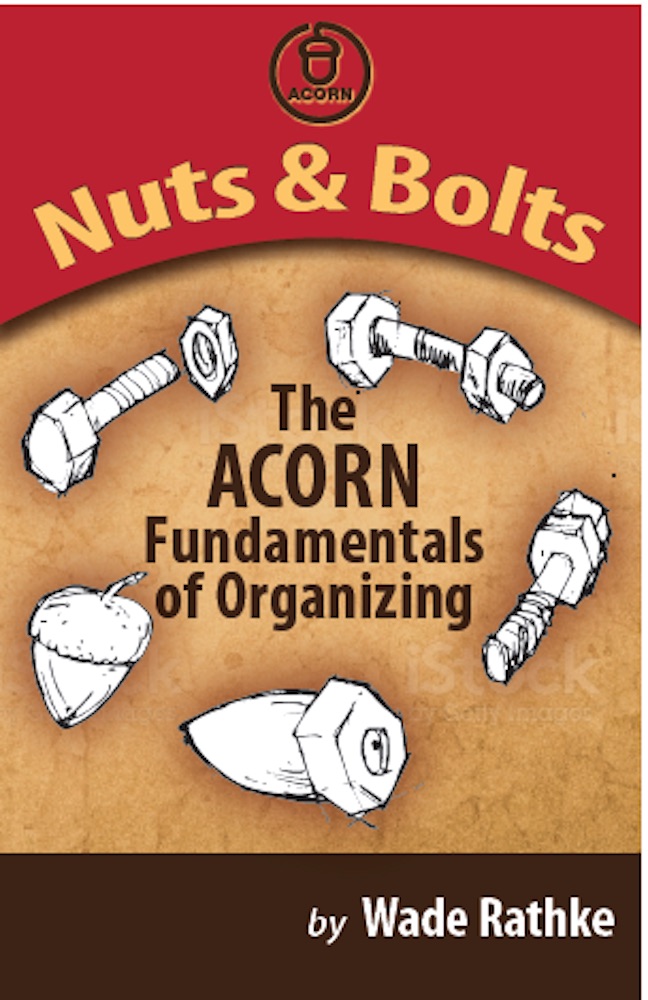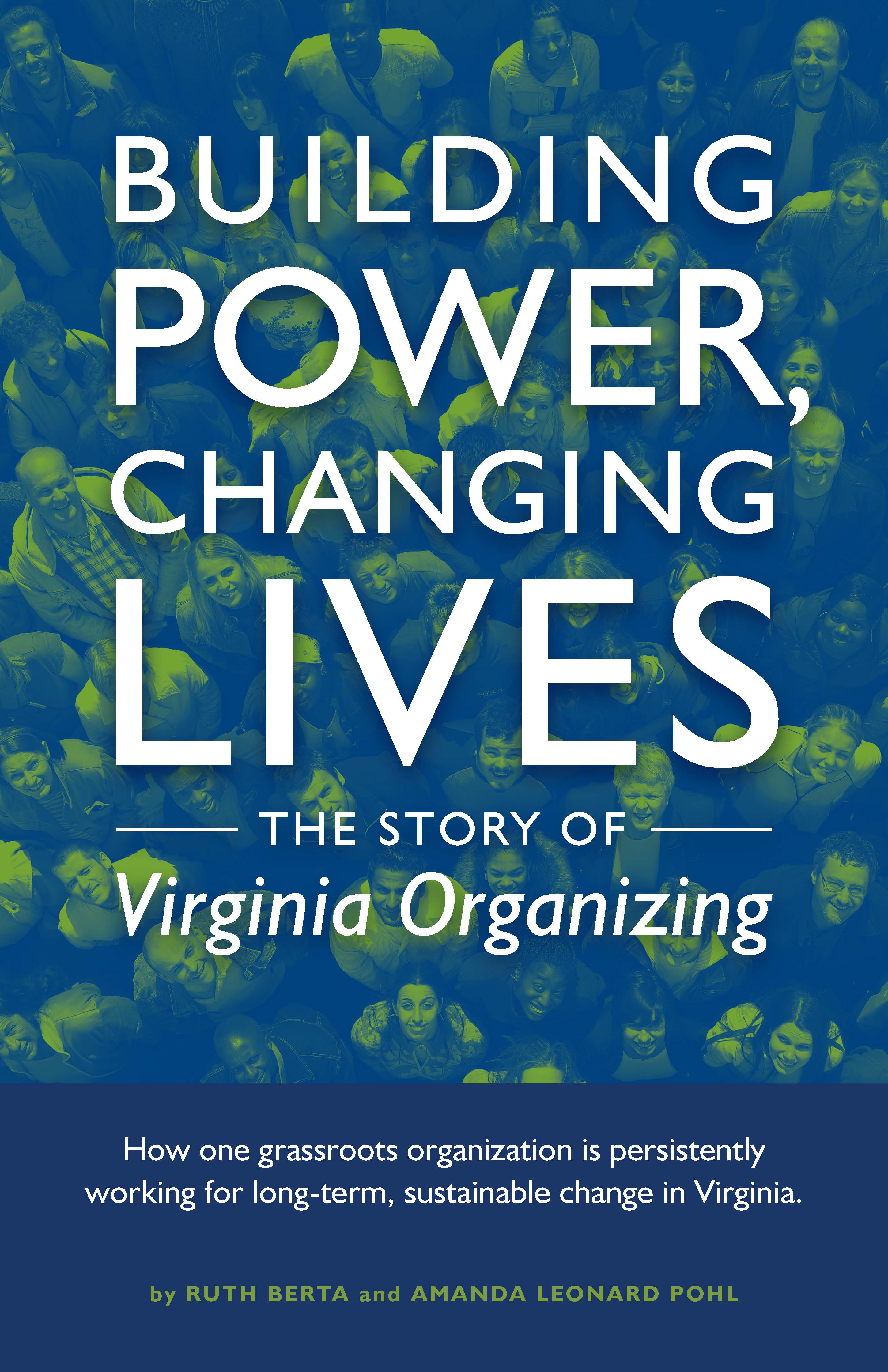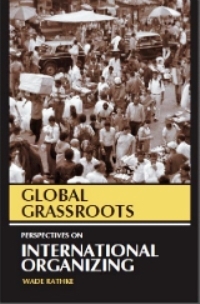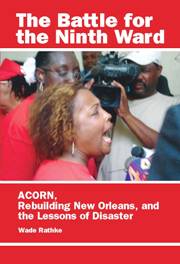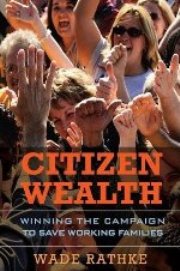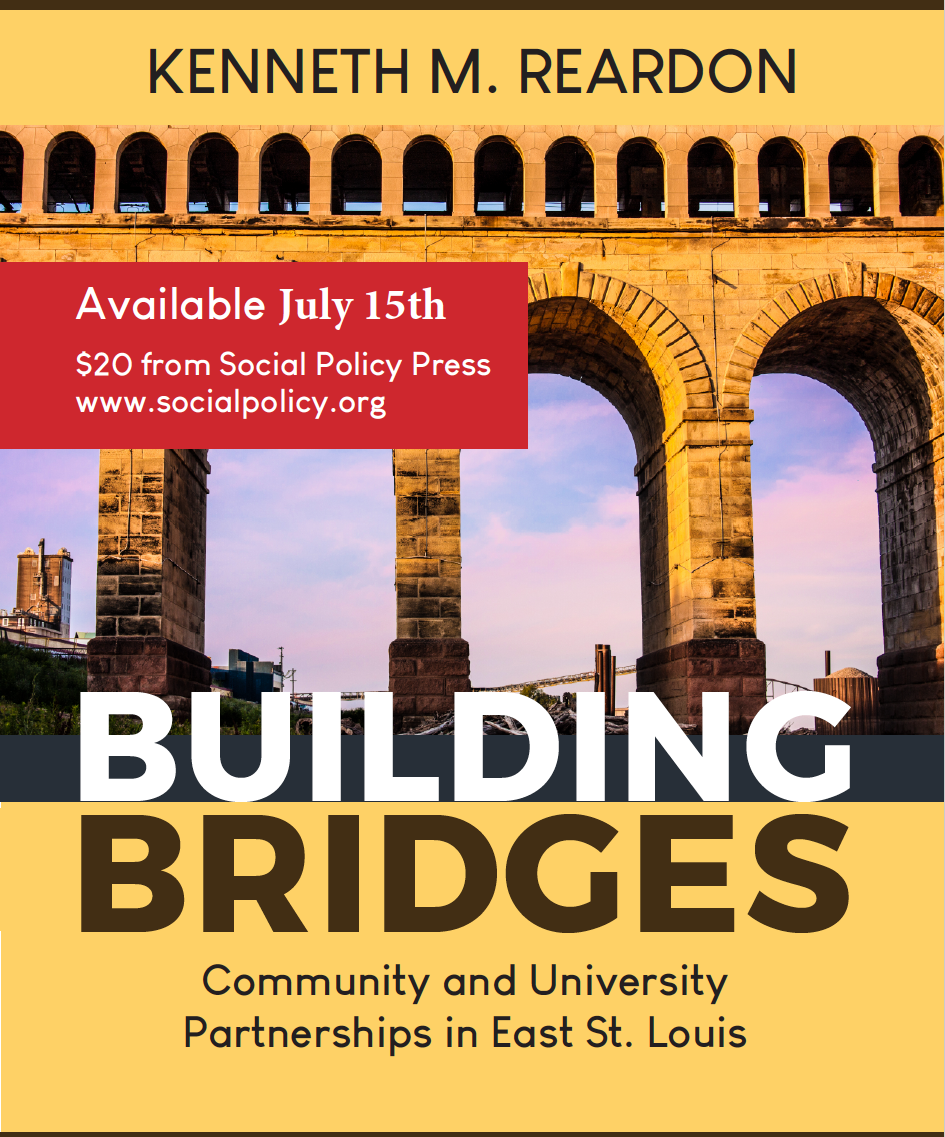Practice: Conflict Tactics
Written by Mike Miller
Part II
Editor’s Note:
This is Part Two in Mike Miller's "Teaching 'From Below' How the World Works," which contains many insights and examples in a master class on community organizing. Part one ran in the last issue of Social Policy (issue 55 #1). Both parts will be available on request to publisher@ socialpolicy.org in the 3rd quarter of 2025
Generally, “conflict tactics” are thought of as militant, confrontational, “direct action.” While sometimes effective in winning a result, these tactics often don't engage large numbers of everyday people (except in unusual circumstances where they may applaud those so engaged, but don’t think of themselves as possibly being among them.) Usually, such tactics rely on the dedication of young people.
In the theoretical discussion above, I describe how a role-play situation is used to move people to understand that there may be material or other conflicts of interest at stake in circumstances they consider to be unjust. It is not simply that decision-makers “don’t know” the consequences of their acts, or even that “they are incompetent” in what they do. They may have political, economic, social or other interests that are more important to them.
This is a liberating lesson because it allows people to recognize that, at a minimum, they must affect their adversary’s interests if they are to change his/her behavior, and at a maximum they might have to create new structures with different incentives if they want to create a more just social order. It is in this shift that the possibility of building something that can lead to transformational change emerges. Everyday people have to learn this lesson to take steps to alter the present concentration of wealth and power that is at the root of the issues of democratic participation, social and economic justice, and sustainable development that might be of concern to any of us. Building power that has the capacity for transformational action requires engaging large numbers of everyday people who do not think of themselves as “activists.” The imaginative use of conflict tactics can do that.
The second set of lessons learned in the role play is about tactics. This is also a three-hour segment. Building something with the capacity to bring about basic change requires winning victories along the way, but there is a double-vision required here: winning concrete benefits from struggle, on the one hand, and changing the relations of power, on the other. The two are interconnected: one looks at the former as a tool to build the latter, and the latter as a tool to accomplish the former.
Meetings With Decision-Makers
Even before the meeting with a “decision-maker,” there is an opportunity for teaching people about power. A request for a meeting with a decision-maker whose scope of authority includes resolving a problem that the group who want to meet is concerned about is the first step. “Mr. Traffic Engineer, we would like to meet with you about a problem we are experiencing in our neighborhood.” Or, “Madame Mayor, we would like to meet with you about the ‘x’, ‘y’, or ‘z’ problem facing our community.” Or, “Mr. Bank Manager, we’d like to meet with you about the foreclosures and evictions that are taking place in our neighborhood.” Or, “Mr. Landlord, we would like to meet with you about the recent notice we received announcing a $100.00 a month rent increase in our apartments.”
The targeted person can say “yes” or “no” to the request for a meeting. What if she or he says “no?” The refusal to meet now requires a response. Perhaps 25 – 50 phone calls are made to the person’s office saying, “we understand that you’ve refused to meet with us. If this is so, we’d like you to reconsider this refusal. We would like you to meet with our group.” Most of the time that will be sufficient to turn the “no” into a “yes.” If it’s not, then a series of incremental, but rapidly escalating, tactics must be pursued. Those who thought a simple request for a meeting would be met with a positive response are being taught by the decision-maker that they must do more. The typical argument between militants and moderates that takes place in many organizations is avoided because the decision-maker forces the moderates to move to a more militant step or abandon their substantive goal. On the other hand, if the meeting is agreed to, the militants will have to acknowledge that, in this case, “reasonableness” works.
In the role play, the person playing the adversary is usually able to use a number of divide and conquer tactics to prevent the meeting from achieving anything more than letting people vent their frustration or anger. (And if that’s all that happens, the lesson learned by everyday people is a confirmation of their usually-held view that “you can’t fight City Hall,” or “you can’t beat the money.”)
Among the things the role-player adversary does to control the meeting are:
* Invite many people to speak; the decision-maker, in effect, chairs the meeting—if anyone starts to pin him/her down, another person is recognized;
* If someone gets insulting or too-militant, threatens to leave the meeting (or in fact walks out), leaving the group hopelessly divided between its militant and moderate members;
* Offers a proposal that gives the responsibility for the problem to the people experiencing it, so that the burden of “repair” is on them. (I’ve many times offered a tenant group that I would pay for the materials if they would organize themselves to do the needed repairs in the building—and sometimes had groups take me up on it!)
After dividing and confusing the group with my responses to what they have to say, and then leaving because I have another appointment, they agree that they need a spokesperson (or spokespersons team); a step-by-step process for presenting their case—including telling stories in the beginning that allow those present to eliminate from their minds the “don’t know” theory of why an adversary doesn’t respond; caucusing (a “time-out”) to talk among themselves if they get confused or divided; a cut-off point when they end the negotiations if they aren’t resolving anything, and; a next step if either agreement is reached or if action is required.
The most difficult thing for most groups to do is end a session. They want to keep talking. They do not recognize that “dialog” is not what this session should be about. Dialog favors the status quo: we can talk about the problem forever. If we think the problem isn’t being solved because the system’s representative doesn’t know about it, or is incompetent to deal with it, then our informed discussion and concrete ideas of how to move forward might be appropriate. But if there are different interests at stake, and no agreement is being reached, then we must do something that will adversely affect the interests of the decision-maker on the other side of the table.
It is often, indeed typically, the case that an adversary will not say “no” to our proposal(s). There are corporate seminars in “fogging” that are designed to train public relations and managerial personnel how to obscure answers rather than make them clear. I call the vagueness that is often heard “mush.” You can’t fight mush. There’s no resistance. We need clarity because without clarity we will be unable to make the moral case to our own members and constituency, let alone to potential allies and the media, that further action is required. Our side’s spokesperson must say, “we are going to take what you are now telling us as a ‘no’.” The spokesperson then turns to the group and says something like, “All of you who agree with me raise your hand.” If there isn’t an overwhelming lifting of the hands, a caucus is required. If there is, the spokesperson now turns to the “target,” as s/he is sometimes called, and says, “Thank you for your time. The meeting has now ended.”
You would be surprised at how many times agreements are reached after this point. The adversary now recognizes that this group isn’t going to be left in disarray, and that something will follow upon the “no.” S/he decides a “yes” is less costly than a fight. A “yes” can be agreement, a mutually agreed upon compromise or new proposal that solves the problem.
One of the things I teach in the role-play is what I call "planned stupidity." Because the people you meet with on the other side go to “fogging” training sessions, they learn to make the situation unclear because lack of clarity is their ally. So is "dialogue." We are not interested in a dialogue. We are interested in responses to specific proposals we place before an appropriate decision-maker who has authority to respond to our proposals. I can't tell you how often I have been in a negotiation in which the party on the other side of the table goes into a long discussion that is beating around the bush. S/he is then invariably taken aback when our side's spokesperson says something like, "Thank you. Now could you tell us your response to our proposal #1; we'd like a 'yes' or a 'no'." (A mutually acceptable alternative would also be a “yes.”)
As a matter of fact, the higher the degree of formal education held by our side’s spokesperson(s), the more difficult it is for them to learn to act “stupidly”. They sometimes think the meeting is a debate. They want to score points and show how smart they are. No matter how smart or articulate they are, they become unwitting allies of the other side's “fogging” agenda. For one reason, when the spokesperson starts showing how smart he is, there is the introduction of a more elaborate argument, and there are people on our side of the table who may have different views. Once a spokesperson gets hooked in this way, there is a strong likelihood that the discipline of others not speaking will break down because some other member of our group who thinks s/he is smart now wants to introduce a "clincher" argument. Etc., etc. Often, I've had to pass a note to a spokesperson to "caucus"--so that we can take a time-out and get back on our agenda, not the opposition's.)
Whether the result of the meeting is a “no” (a disagreement) or a “yes,” there are after-the-meeting organization building activities that should take place:
- reflection—connecting deeply held values to the specific situation) on the meaning of what was done here today. This reflection might draw upon religious or secular democratic materials. A skillful reflection adds deep meaning to the action that just took place.
- celebration—recognizing the history makers we are creating in our organization by giving credit to spokespersons, floor monitors, turnout work done by leaders and otherwise acknowledging roles played by people in the organization. Our work is creating a new story of “our people” making history.
- interpretation, typically provided by one of the leaders of the group or the organizer, provides a common message that participants will take home and share with others to answer the skeptic’s question, “Why did you waste your time at that meeting?” or the interested person’s less-cynical inquiry.
- evaluation asks people how they felt about the experience (subjective evaluation), and compares pre-set objectives with actual experience and results (objective evaluation) so that learning takes place for all who participated. A more elaborate leadership evaluation will come later—as soon after the experience as possible so that its memory is accurate. Evaluations are typically led by the organizer.
- socializing—a party, coffee, whatever—might also be announced so that participants can better get to know one another.
(Contrast this approach to picketing outside a building! As an organizer associate of mine once said about the tactic, "I don't want to piss off a building.")
In the case of a “no,” the next step is likely to be an action in what will be a campaign to turn the “no” into a “yes.” If the fight undertaken is one within the capability of the group, then the battle will be won. If not, defeat may follow.
If the issue at hand was bank foreclosures, a more formal educational discussion, seminar or workshop might explore credit unions, publicly owned banks, anti-trust legislation, tighter regulation and other policy options people power organizations could adopt in relation to financial institutions. It might involve exploring the history of the Populists, and their efforts to deal with banks. Here, curiosity—the motivation to learn—is aroused by the experience of a conflict with power. In this case, it is a bank manager--i.e. the system--that is doing the initial "education" of the people. Of course, leadership and organizers are engaged in interpretative discussions with campaign participants--but the initial "curriculum" is provided by the behavior and utterances of the manager. That is far better than a lecture in a pre-set curriculum because the impetus to learn comes out of the action.
The campaigns that begin with these face-to-face meetings implement three tactical principles (these are not original to me): personalizing the opposition, polarizing the situation, and “the action is in the reaction.” These were introduced to me by Saul Alinsky. This is an elaboration of them.
- Personalize the opposition: Using the example of a bank manager, who we’ll call “Mr. Jones”, the issues about which the group wants to meet are foreclosures and evictions from foreclosed houses. The delegation wants to propose to him that he (a) place a moratorium on the foreclosure of the "x," "y," and "z," families who are part of the delegation or represented by the group, and re-negotiate their loans, and that he withdraws eviction notices to families “a,” “b,” and “c”. (Note: not "demand" or “request”, but "propose". Not “request” because it means that you’re only asking. Not “demand” because some of your people will prefer being polite, and you will divide your group at the outset over the use of the word. I have yet to find anyone who objects to “propose.”)
Central to doing this correctly is the extended role-play beforehand in which, in this case, someone plays the bank manager. One of the things the role player says is, "I don't have the authority to do that." The "people's side" responds, "Then we want an appointment with you within 30 days at which time either you have obtained the authority, or you bring to the meeting a person who has the authority to act on our proposals.” (In fact, the manager may not have the authority, but someone does—and if the heat on that bank branch is high enough the manager will be able to produce that someone.) You set the appointment then. (There's lots more in the role-play; another key phrase to be learned is that "We are sure you can find someone in your bank to come to the meeting with authority to speak for the bank on this matter.")
Why is this important? First, an analogy: people think awful things about Congress--but not their Congressperson. Similarly, people think awful things about Bank of America, Wells Fargo, Chase, Citibank, etc, but don't think so badly about their branch where the tellers are nice to them, the manager may have waived a bounced check fee, and the bank donates to local nonprofits. The bank manager has to be given the opportunity to do the right thing, even though we may think the odds are 99:1 that he won't or can't.
- Polarize the situation. The bank manager's refusal to do the right thing—agree to get the “right person” to a next meeting—is the source of energy for a campaign to make the bank behave as we want it to. That refusal makes moderates into militants. People who would not have handed out flyers in front of the bank or engaged in boycott conversations with account holders as they entered are now willing to do that and more.
The conversations and flyers might ask account holders to close their accounts. The campaign's specific, well-researched proposal(s) (simple, not complex, but rooted in law and/or bank regulations and practices) eliminate the theory "the system is incompetent." You have given the system a way to competently act to solve the problem; it has refused to accept it. That leaves the theoretical understanding you want people to reach—that at least in some instances the system has different interests than those of your group and, perhaps, of the millions of families who are being foreclosed across the country. They want to make a buck. You want people to have decent, safe, affordable, sanitary housing in communities of their choice.
- The action is in the reaction. In the role-play, what must be accomplished is an agreement that the spokesperson team will only accept either a "yes" or "no" answer. (As an organizer I often prefer a “no” to a “yes” in first encounters with decision-makers. But note this caveat: that’s because I’m pretty confident that our group can turn the “no” into a “yes.” I want people to learn how to fight for justice. If agreement comes too easily, they won’t learn much about the use of nonviolent tactics to accomplish their goals.)
That doesn’t mean getting a “yes” isn’t a plus. In one situation, the community organization I was working for presented to the city traffic engineer a map of new safety signs at dangerous neighborhood intersections. He asked for a couple of weeks to consider the proposal. When he returned, he told the group, “This is the best proposal for changes I’ve ever received from a community group,” and agreed to all of them. The organization had a year-end banquet and awarded him a “civil servant of the year” plaque.
Conclusion
We are now in a period of great opportunity…and great danger. Activists have to be careful not to generalize to the population as a whole from their own anger and analysis. There already are people whose general view is that the banks are just in business to make money, and that all their rhetoric, use of community rooms for public meetings, donations to the local school, jars of goodies for dogs, balloons for kids, etc. are window dressing to accomplish that result. But it may be that there is still a gulf between those so convinced and the majority, or a significant minority, who remain to be convinced. This group must become engaged if we are to accomplish the broader program of claiming and winning democracy, social and economic justice and a sustainable environment in a peaceful world.
The opportunity is building a truly transformational movement. The danger is that our action will unleash a repressive reaction, or strengthen forces more powerful than our own, or that defeat will lead to a return to feelings of hopelessness, powerlessness and despair, accompanied by continued and expanding social and economic problems, and even greater concentration of wealth and power in the hands of the few.
Another danger is an illusion that is unfortunately being propagated by people who should know better—that there is already a "mass movement". As was learned in the 2024 election, we are far from that. There is motion. That is good. There is a whole shift in the country's debate that is expressed in the anger at the “1%." That is good too, but MAGA captured a lot of it. There is still a need to move many, many, many more people into some form of liberating action — action that will make use of the personalize, polarize, and “the action is in the reaction” tactical principles.
Here’s something to think about that will give you a sense of scale: in 2011 there were demonstrations in Israel for greater economic and social justice in domestic policies. For us in the United States to reach a population-equivalent scale to their turnout, we would have to have 18 million people demonstrating in Washington, DC. We aren’t there yet. Among other things, if we master conflict tactics, we can get there.
*About the Author
Mike Miller is a long-time community organizer, based in the San Francisco Bay Area. Learn more about him and his work at <www.organizetrainingcenter.org>
*Thanks to Bill Domhoff for editorial comments.



